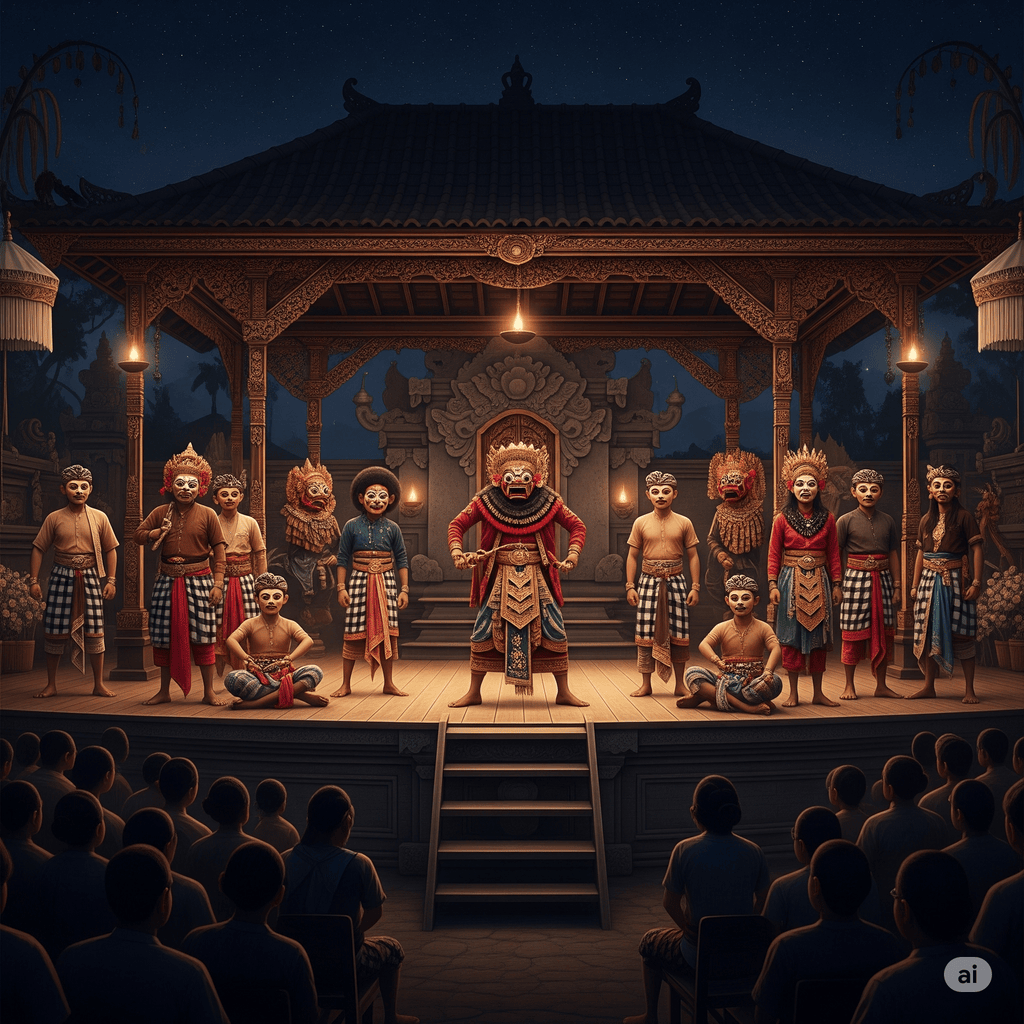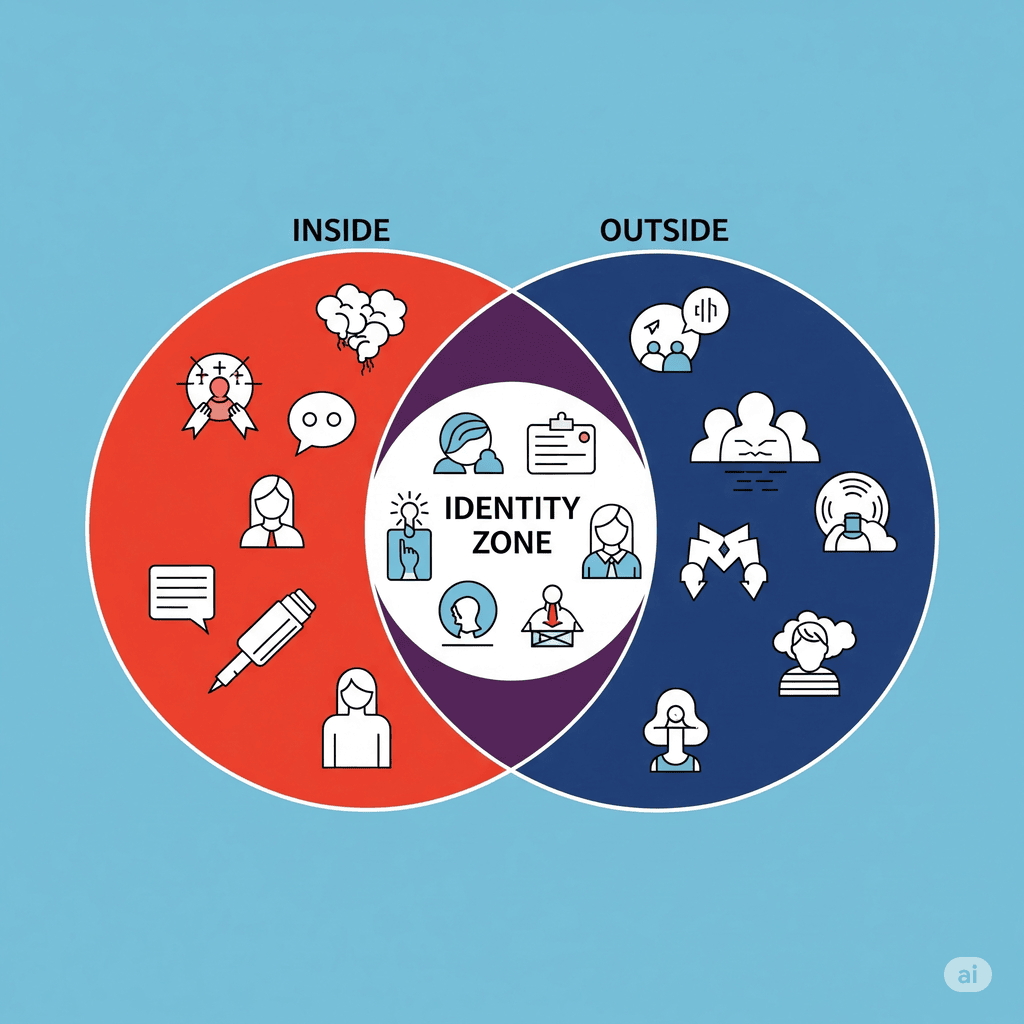Introduction: Identity, Roles, and the Drama of Life
Every human is born with an identity, but over time, the world asks us to wear various role masks. In the office, family, or community, we are compelled to adapt, sometimes to the point of forgetting who we really are. But have you ever wondered—how does culture shape the way we view ourselves? And what impact does it have on our creativity, leadership, or even our happiness?
Howard Gardner, in his work “Frames of Mind,” invites us to explore how society weaves identity and roles into the human mind. By highlighting the dramas of life in Bali and Java as well as the world of art, Gardner reveals fundamental secrets about self, roles, and human potential that we often overlook.
Bali, Java, and the Theater of Existence: Becoming Someone in Society?
Balinese Life – Masks, Roles, and the Fear of Authenticity
In Bali, life is a grand stage. Each individual lives in a highly structured social drama. One’s identity is no longer about personal uniqueness but rather about how well one embodies the roles inherited from society. There, everyone is an actor in an eternal play; masks and roles become more important than self-authenticity.
Gardner writes that in Balinese culture, “every aspect of personal existence is distilled such that anything idiosyncratic is suppressed in favor of the roles established in the drama of Balinese life.” The greatest risk? When the public performance fails and the true personality suddenly emerges. In those moments, it feels intensely human, and one becomes “creatural”—returning to raw basic instincts. This is the greatest existential fear: being overwhelmed by authenticity amidst the overwhelming pressure of social roles.

Javanese Philosophy – Inner & Outer Self, “Pure” and “Civilized”
Unlike Bali, Javanese society emphasizes two main poles in defining self: “inner” and “outer.” The “inner” realm encompasses feelings and subjective experiences, while the “outer” involves observable actions, speech, and body posture. Interestingly, these two sides do not replace each other but are managed independently. Each individual strives to balance a turbulent inner world with an outward world full of rules.
Additionally, there is a tension between “pure” and “civilized,” where Javanese society places a high value on the ability to maintain harmony between these two worlds. However, how does one maintain balance without falling into pretense or losing inner authenticity?
Advanced techniques for managing identity duality in Javanese culture, including case studies and their applications in the modern era, are part of the exclusive insights we have prepared at MentorBuku…

The Concept of Composition Sensitivity: Lessons from the World of Art
Ben Shahn, Turner, and Herbert Read – Sensitivity to Form and Color
Not only culture, but Gardner also highlights spatial intelligence in art. A great artist like Ben Shahn reveals, “ideas must emerge from images.” Meanwhile, Turner—through his manipulation of color and form—successfully creates light that cannot be achieved by logic alone. Herbert Read emphasizes that true beauty is derived not from physical objects but from the ability to capture form, color, and composition in a work of art.
This is what Gardner refers to as composition sensitivity: the ability to arrange visual elements to create harmony and new meaning. In art, issues of design, color, and form become central, often surpassing the subject of the painting itself.
However, there are three common mistakes that often occur when developing composition sensitivity, which are thoroughly examined in our summary…
Also read: Marketing Made Simple: A Step-by-Step StoryBrand Guide for Any Business by Donald Miller
Implications for Modern Life: Managing Roles, Identity, and Creativity
What does this mean for you? The modern world demands that we adeptly play many roles—professional, personal, social. However, the pressure to always “look good” risks leading us to lose ourselves. On the other hand, the ability to maintain a balance between the inner world and external appearance becomes the key to psychological resilience.
From art, we learn that sensitivity to composition (both in works and in life) determines the quality of the final outcome. The ability to “arrange” emotions, roles, and expressions is as important as arranging colors on a canvas. Integrating lessons from culture and art can serve as a catalyst for building an authentic identity, creating innovative works, and living a more meaningful life.
A practical framework for strategically managing roles and identity in professional and personal worlds, complete with templates and practical exercises, can be found at mentorbuku.com…
Also read: Emergency Medicine PreTest Self-Assessment and Review, Second Edition (PreTest Clinical Medicine) by Adam Rosh
Conclusion & Call to Action
This article is just the spark. Imagine if one idea from here could change the way you work or think. Now, envision what dozens of other strategic ideas could do. That is the power waiting for you.
Sign up and Get Free Access at MentorBuku Now!